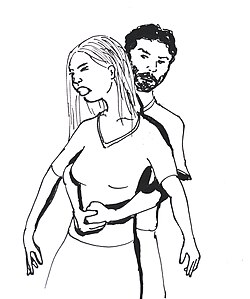Difference between revisions of "Translations:AY Honors/First Aid, Basic/Answer Key/83/en"
(Importing a new version from external source) |
(Importing a new version from external source) |
||
| Line 1: | Line 1: | ||
</noinclude> | </noinclude> | ||
<!-- 3. Know the proper procedures to assist a choking victim. --> | <!-- 3. Know the proper procedures to assist a choking victim. --> | ||
| − | {{: | + | {{:AY Honors/First aid/Choking}} |
Latest revision as of 11:52, 8 September 2021
Coughing is the body's natural defense against choking, and it is generally very effective. If the victim is coughing, do not interfere. If the victim stops coughing (or was never coughing in the first place), ask her "are you choking?" If the victim indicates that she is choking, tell her you are going to help her. To do this, you will need to perform the Heimlich Maneuver.
Briefly, a person performing the Heimlich Maneuver uses their hands to exert pressure on the bottom of the diaphragm. This compresses the lungs and exerts pressure on any object lodged in the trachea, hopefully expelling it. This amounts to an artificial cough. (The victim of an obstructed airway, having lost the ability to draw air into the lungs, has lost the ability to cough on their own.)
Even when performed correctly, the Heimlich Maneuver can injure the person it is performed on. The Heimlich Maneuver should never be performed on someone who can still cough, breathe, or speak. It should not be demonstrated or practiced on a healthy, non-choking person.

